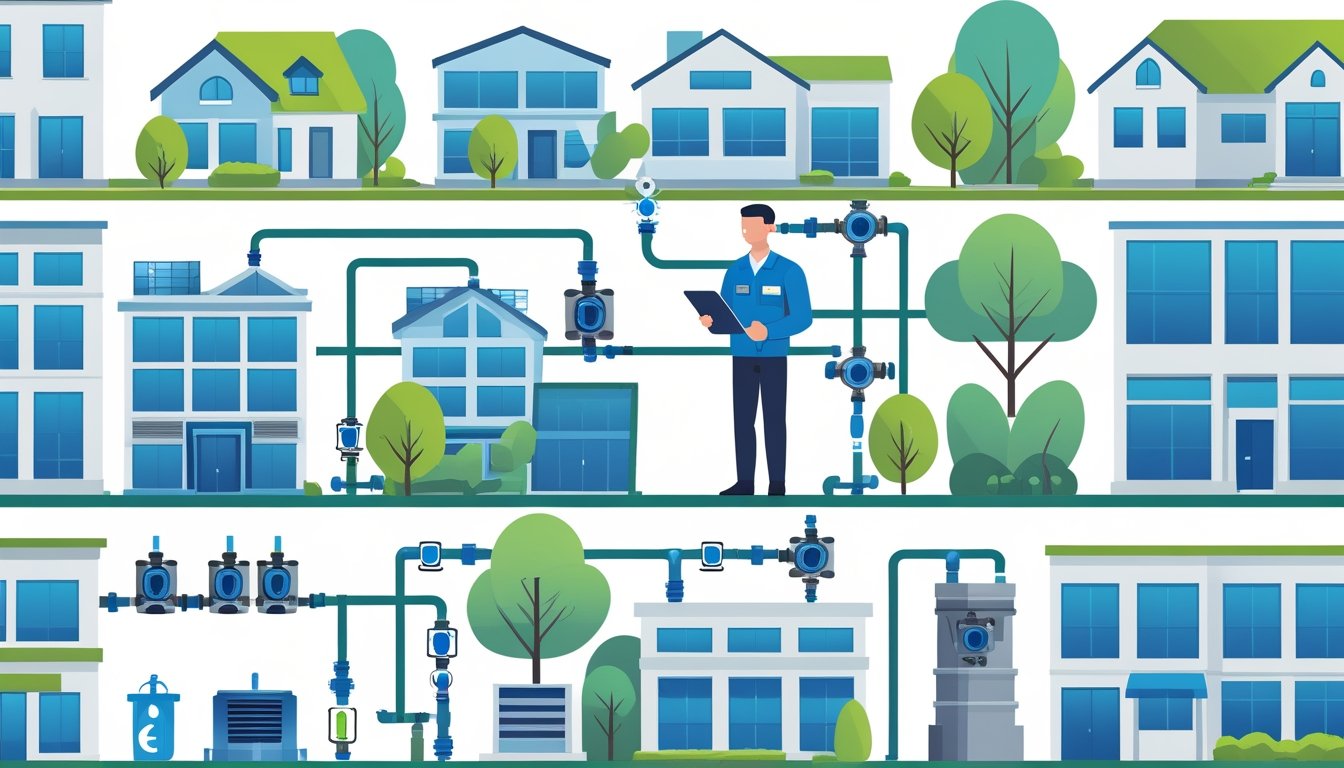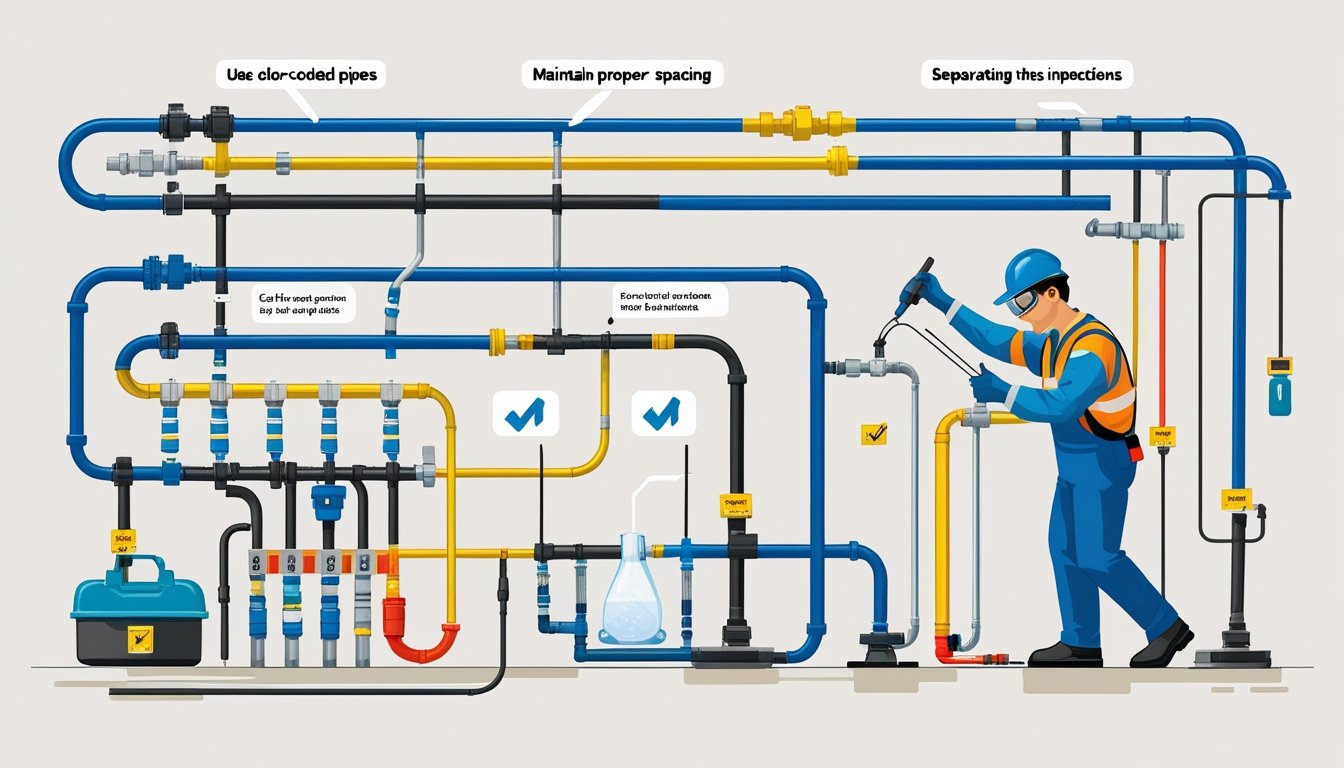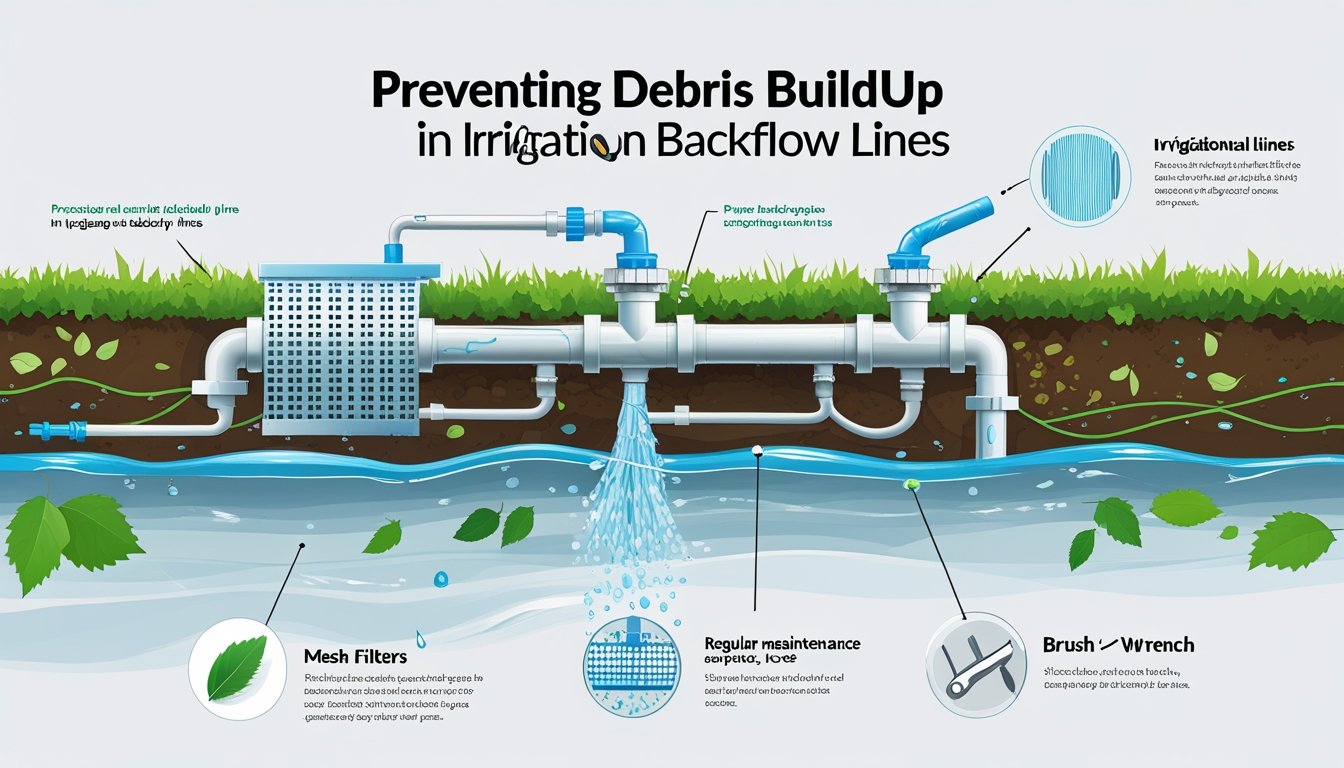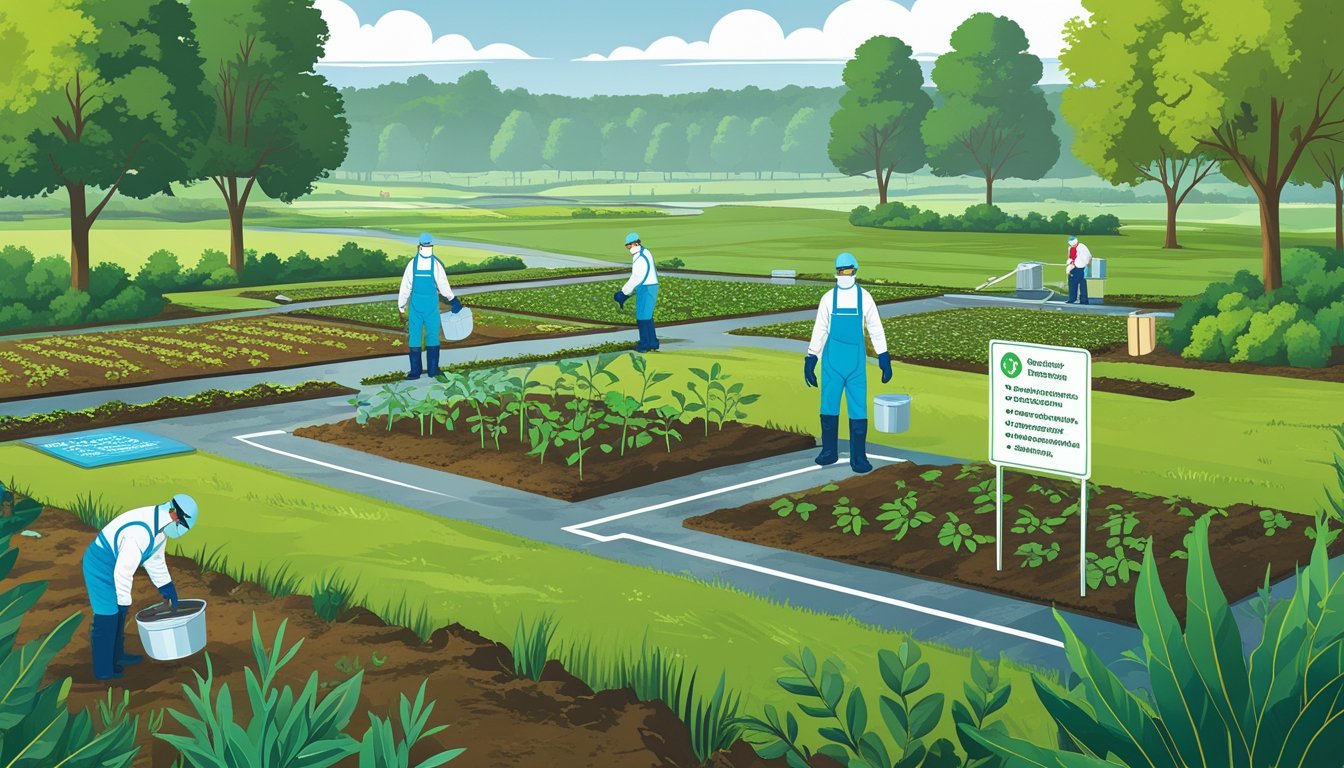Clean water is essential for every commercial building's daily operations. Backflow prevention systems protect drinking water from contamination by stopping dirty water from flowing backward into your clean water supply. We recommend annual testing and maintenance of backflow devices to keep your water safe and meet local regulations.
Commercial properties need reliable backflow services to maintain their water safety standards. A certified backflow tester checks these devices to ensure they work properly and to prevent contaminated water from entering your drinking water system.
The U.S. EPA notes that backflow through an unprotected cross-connection can cause serious chemical or microbiological contamination of drinking-water systems, and effective programs include legal authority, certified testers, and thorough recordkeeping, with specifics (like testing frequency and approved assemblies) set by each state or municipality.
Many local water departments require yearly testing to protect public health, and will usually notify you when it's time for your next required test. Professional backflow testing takes little time but delivers big benefits by keeping your water clean and your building up to code.
This guide explains how backflow occurs (back-siphonage vs. back-pressure), which preventers belong in commercial applications (air gaps, RPZ, double check, PVB), and how to install them where they can be tested, drained, and protected from freezing.
Here's what you need to know:
- Backflow prevention for commercial buildings
- Backflow preventer types (commercial applications)
- Install and maintain backflow preventers for compliance
- Backflow issues: compliance management and incident response
You’ll see what annual testing actually includes, which records authorities expect, how to respond to a suspected contamination event, and how to choose a certified tester, so your facility stays safe, open, and audit-ready year-round.
Backflow prevention for commercial buildings
Backflow poses a serious risk to clean water supplies in commercial buildings through contamination. Prevention systems and devices play a critical role in maintaining water safety.
Backflow basics and risks
Backflow happens when water flows in the opposite direction through pipes, pulling contaminated water into clean water supplies. This typically occurs due to pressure changes in the plumbing system.
There are two main types of backflow:
- Back-siphonage: When negative pressure pulls contaminated water backward
- Back-pressure: When higher pressure pushes contaminated water into the main supply
Common contaminants include:
- Chemicals from cooling systems
- Sewage
- Industrial fluids
- Fertilizers and pesticides
Typical contaminants in commercial systems
Where they come from:
- Mechanical rooms: boiler treatment chemicals (oxygen scavengers, scale inhibitors), condenser/cooling tower biocides, glycol.
- Janitorial/food service: detergents, degreasers, sanitizer concentrates, rinse aids.
- Ground-contact systems: irrigation lines laden with soil, fertilizers/pesticides; hose bibbs submerged in mop buckets.
- Stagnant loops: fire sprinkler branches and seldom-used “dead legs” that can harbor bacteria and rust.
Many of these are high-hazard (health risk), not just “non-potable.” During back-siphonage or back-pressure, they can move across a cross-connection into the potable system.
During the cross-connection survey, inventory every point where potable water touches processes, chemicals, soil, or open tanks. Classify each as containment (service entry) or isolation (specific branch/equipment) and assign the correct device (air gap, RPZ, DC, PVB). Tag sources with risk level so operations knows what not to bypass.
Why prevention matters for compliance and public health
Regulatory chain: local water authorities protect the public main; they typically mandate annual testing, record submission, and prompt repairs. Non-compliance escalates from notice → fine → shutoff. Insurance carriers can also require proof during renewals or after incidents.
Business impact: beyond health risk, a backflow event can trigger boil-water notices, tenant disruption, and reputational damage. Downtime costs often exceed the price of testing and proactive repairs.
Proof on file: keep test reports, device serials, gauge calibration certificates, and tags current. Post the test tag visibly on each assembly, and mirror the data in a central register for audits.
Backflow preventer types (commercial applications)
We use several devices to stop backflow in commercial buildings, and each serves specific purposes based on risk level and application.
Air gap devices
When they’re mandatory: choose an air gap for continuous/severe hazards, chemical feed tanks, indirect waste from equipment that can contact contaminants, or where no mechanical device is acceptable by code. Air gaps remove moving parts from the risk equation.
Design that actually works:
- Keep the vertical separation between the supply outlet and the flood level rim of the receiving vessel per code (commonly “twice the outlet diameter,” with a minimum clearance).
- The receiving vessel must be atmospheric (unpressurized). Any downstream pump goes after the gap.
- Prevent splash-back into the outlet with correct offset and a receptor sized for peak flow; use rigid supports so the outlet cannot be submerged due to sagging hoses or moved equipment.
- For indirect wastes into floor sinks or funnels, maintain a visible air gap—staff should be able to see it during inspections.
Common failures to avoid: makeshift hoses hanging below the rim, “temporary” extensions that defeat the gap, or tying relief drains into sanitary without an air gap—all create hidden cross-connections.
Mechanical preventers (RPZ, double check, PVB)
When to specify RPZ: use an RPZ (Reduced Pressure Zone) where back-pressure or back-siphonage could push high-hazard contaminants toward potable lines—e.g., boilers with treatment, commercial dish machines with chemical injection, lab services, chemical feed skids, some irrigation with fertigation. RPZs provide active relief when internal checks or pressure zones aren’t correct.
Installation details that prevent headaches:
- Upstream strainer helps keep debris from fouling checks and the relief valve.
- Mount level, with unobstructed relief port and clearance below for discharge (don’t put over mission-critical gear).
- Put assemblies indoors or in heated enclosures in cold regions; outdoors requires a drain path that won’t ice or flood doorways.
- Expect pressure drop across the assembly; verify downstream fixtures still meet minimum pressures. Coordinate with design for pump/PRV settings.
Relief discharge planning: RPZs may discharge briefly during pressure swings, thermal expansion, or check fouling, that’s a feature, not a defect. Route discharge to a floor receptor or drain with an air gap; never hard-pipe to sanitary. If nuisance discharges occur, investigate debris, negative pressure events, or thermal expansion without expansion control, rather than throttling or capping the relief.
Commissioning & operations: function test on install, tag and document serials, and set a proactive cleaning/overhaul cadence in high-debris systems (cooling towers, irrigation with poor filtration). Train staff not to use shutoff valves for throttling fully open or closed only.
Special systems: fire sprinklers, irrigation, and process water
Fire sprinklers: even “clean” wet systems become non-potable once stagnant. Systems with additives (antifreeze, corrosion inhibitors) elevate hazard. Many jurisdictions require a dedicated backflow assembly (e.g., DCDA/RPZ) on the fire service, tested annually, separate from domestic water.
Irrigation: direct soil contact and potential chemical injection (fertigation) make this at least moderate hazard; some cases are high hazard. Place the assembly upstream of the first branch, set at workable height, and winterize (drain/insulate) to prevent freeze failures.
Process water: plating lines, lab benches, RO/DI systems with chemical cleans, treat these as isolation points with device types matched to the process risk. Do not rely solely on the building’s containment device at the meter.
Install and maintain backflow preventers for compliance
Proper installation and regular maintenance of backflow preventers are essential steps to protect water supply systems from contamination. Professional technicians must follow strict guidelines and testing protocols to ensure these devices work correctly.
Professional installation services
A certified plumber needs to assess the specific hazard level at your facility to select and install the right type of device. You should mount backflow preventers above ground for easy access.
Professional installation includes:
- Site evaluation and hazard assessment
- Proper sizing and device selection
- Compliance with local building codes
- Testing after installation
- Documentation and certification
Certified technicians use specialized tools and follow manufacturer guidelines to ensure correct positioning and secure connections. The installation location must also protect the device from freezing and physical damage.
Annual testing and routine maintenance
Annual testing is required by law for all commercial backflow preventers, and regular checks help catch problems early and extend the life of your device. A maintenance schedule helps track when tests are due and what repairs have been done. Keep detailed records of all maintenance work for regulatory compliance.
Key maintenance tasks include:
- Visual inspection for leaks or damage
- Testing of all valves and seals
- Cleaning internal components
- Replacing worn parts
- Documenting test results
Testers use calibrated testing equipment to verify the proper operation of relief valves and check valves. If they find issues during testing, they can usually make repairs immediately to keep your system compliant and working safely.
Location, drainage, and freeze protection requirements
Placement: mount assemblies above grade, in plain view, with clearances for test cocks and shutoff handles. Avoid pits or vaults that can flood; submerged assemblies can pass a bench test today and fail in service tomorrow.
Drainage for relief discharges (RPZ): relief valves are designed to open when conditions demand. Provide a floor receptor or drain sized for the assembly’s expected discharge. Keep the outlet unobstructed, with air gap separation to any receptor, no hard piping that can backflood the relief port.
Freeze protection: in cold climates, use heated enclosures or bring assemblies indoors near the entry. Insulate upstream/downstream piping and prevent relief discharge from icing walkways or equipment. Mark shutoffs so staff can isolate during extreme events.
Backflow issues: compliance management and incident response
Proper backflow management requires regular monitoring and quick responses to prevent contamination risks in commercial plumbing systems. Regular testing and clear incident protocols keep buildings safe and compliant.
Commercial backflow annual inspections, test records, and compliance
Schedule annual backflow prevention device inspections to verify that your system works correctly and meets local regulations.
Building managers need to maintain detailed records of all inspections and test results, too, as many cities require this documentation for compliance purposes. This helps avoid fines and keeps tenants safe.
- Annual device testing
- Documentation of all maintenance
- Registration with local water authorities
- Prompt repair of failed devices
Responding to backflow or water contamination events
Fast action during backflow incidents prevents widespread contamination. You must shut off the main water supply immediately if you spot signs of contamination.
- Turn off the water supply
- Contact certified plumbers
- Notify building occupants
- Document the incident
- Test water quality
Flush all affected pipes thoroughly after fixing the cause. Professional cleaning may be needed for severe contamination cases.
Regular staff training helps teams spot early warning signs, and quick identification leads to faster responses and reduced risks to building occupants. This can be crucial to stop anyone from becoming sick from contaminated water.
Recordkeeping and documentation for audits
Maintaining a minimum dataset per device including: location/room, type/size, served system (e.g., “kitchen hose bibb manifold”), serial number, install date, risk classification, last test date/result, tester ID, gauge calibration date, repairs made.
Controls that pass audits:
- Device tag matches the register (serial, date, result).
- Digital repository (PDFs of reports + photos of nameplates and installation).
- Compliance calendar with reminders 30–45 days before due dates; auto-escalation to facilities management.
- After repairs: retest and file the pass report with the authority, linking it to the failed report for traceability.
EPA’s Cross-Connection Control Manual recommends that communities operate a formal program, typically via ordinance, with inspection, testing by certified personnel, and enforceable penalties to maintain protection of the potable supply; utilities should track testable devices and verify they’re tested on schedule.
Conclusion
Backflow control isn’t a “set it and forget it” task, it’s an ongoing compliance and risk-management program. For commercial buildings, protection hinges on three things working together: the right device for the hazard (air gap, RPZ, DC, PVB), code-compliant installation and location (access, drainage, freeze protection), and annual testing with clean documentation. When any link fails, you risk contaminated drinking water, enforcement actions, downtime, and avoidable costs.
If your assemblies are due, or you’ve had nuisance discharges, pressure complaints, or device failures, treat that as a trigger to act. Verify device selection against actual hazards, relocate or protect assemblies where needed, and bring testing and recordkeeping current.
Get in touch to arrange your next inspection to ensure your drinking water is completely safe.
We’ll confirm hazard levels, recommend the correct assembly (including RPZ use where required), plan code-compliant placement and drainage, perform certified testing, and deliver the documentation your water authority expects so your building stays safe, open, and audit-ready.











